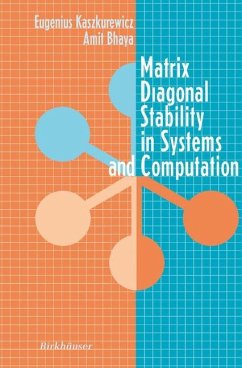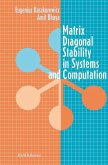This monograph presents a collection of results, observations, and examples related to dynamical systems described by linear and nonlinear ordinary differential and difference equations. In particular, dynamical systems that are susceptible to analysis by the Liapunov approach are considered. The naive observation that certain "diagonal-type" Liapunov functions are ubiquitous in the literature attracted the attention of the authors and led to some natural questions. Why does this happen so often? What are the spe cial virtues of these functions in this context? Do they occur so frequently merely because they belong to the simplest class of Liapunov functions and are thus more convenient, or are there any more specific reasons? This monograph constitutes the authors' synthesis of the work on this subject that has been jointly developed by them, among others, producing and compiling results, properties, and examples for many years, aiming to answer these questions and also to formalize some of the folklore or "cul ture" that has grown around diagonal stability and diagonal-type Liapunov functions. A natural answer to these questions would be that the use of diagonal type Liapunov functions is frequent because of their simplicity within the class of all possible Liapunov functions. This monograph shows that, although this obvious interpretation is often adequate, there are many in stances in which the Liapunov approach is best taken advantage of using diagonal-type Liapunov functions. In fact, they yield necessary and suffi cient stability conditions for some classes of nonlinear dynamical systems.
"The book provides an essential reference for new methods and analysis related to dynamical systems described by linear and nonlinear ordinary differential equations and difference equations. As such, it is addressed to researchers, professionals, and graduates in applied mathematics, control engineering, stability of dynamical systems, convergence of algorithms, and scientific computation." -Zentralblatt Math
"The authors admirably present a great wealth of theoretical results and exciting applications and a long list of relevant references on diagonal stability. It would not be surprising if the reader finds that a dynamic system in his or her own research is diagonally stable." -SIAM Review
"The book is self-contained, includes both classical and new results presented in a unified way, and includes a great variety of useful references." -EMS Newsletter
"The authors admirably present a great wealth of theoretical results and exciting applications and a long list of relevant references on diagonal stability. It would not be surprising if the reader finds that a dynamic system in his or her own research is diagonally stable." -SIAM Review
"The book is self-contained, includes both classical and new results presented in a unified way, and includes a great variety of useful references." -EMS Newsletter








